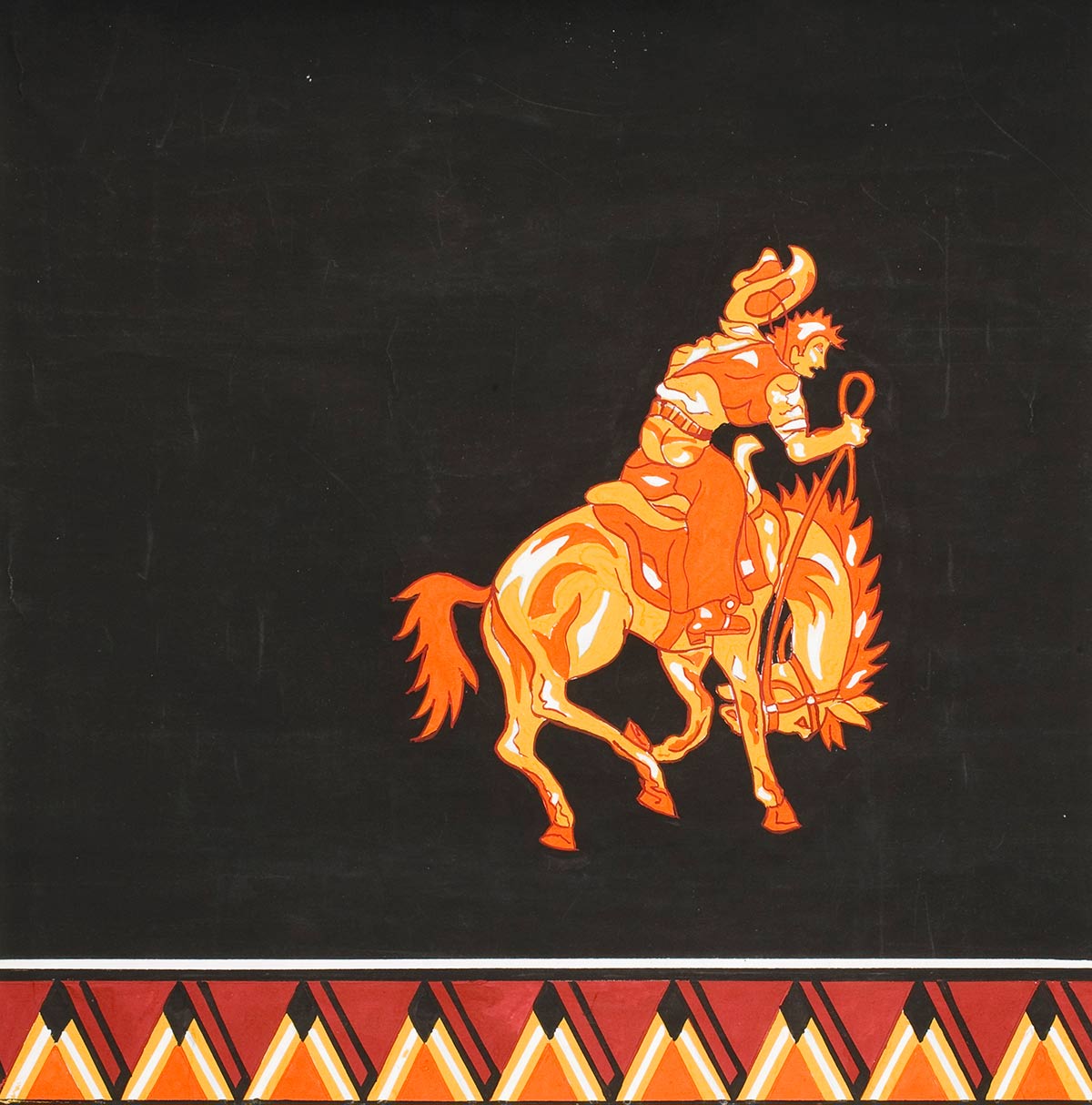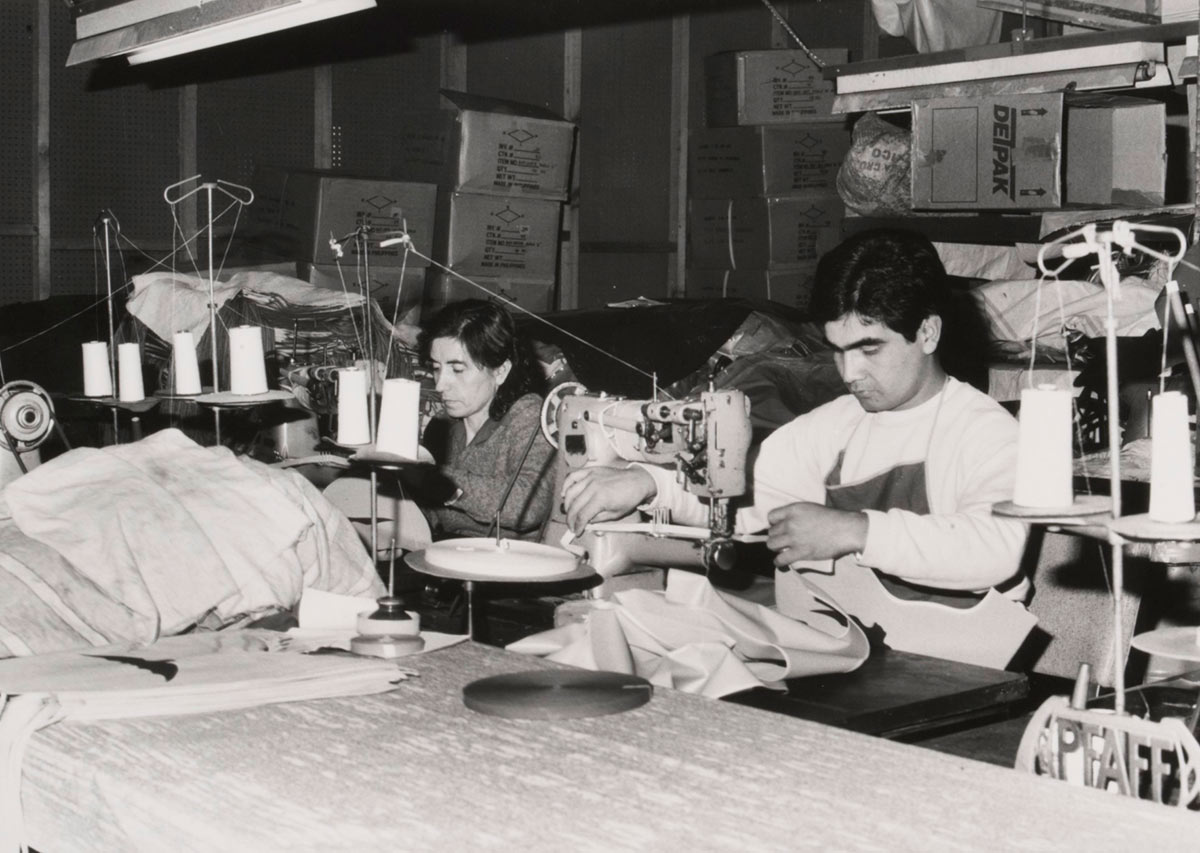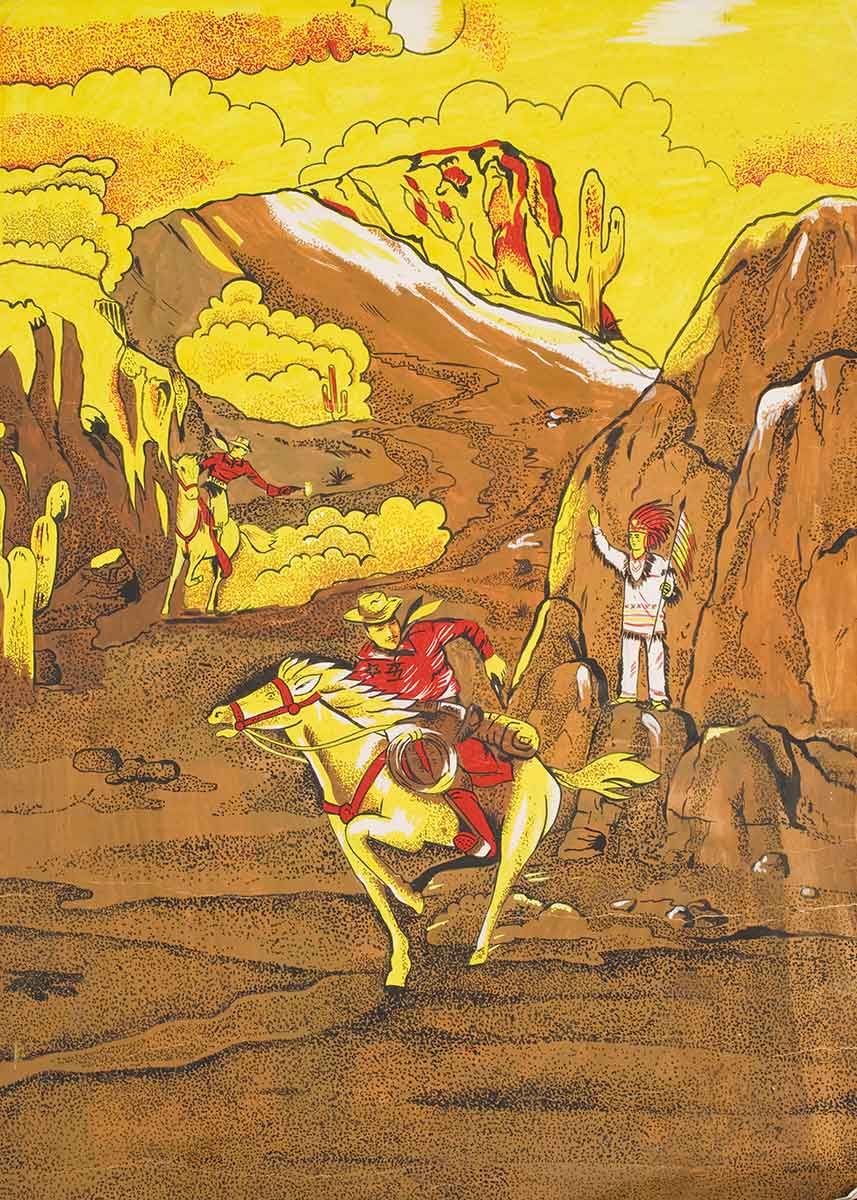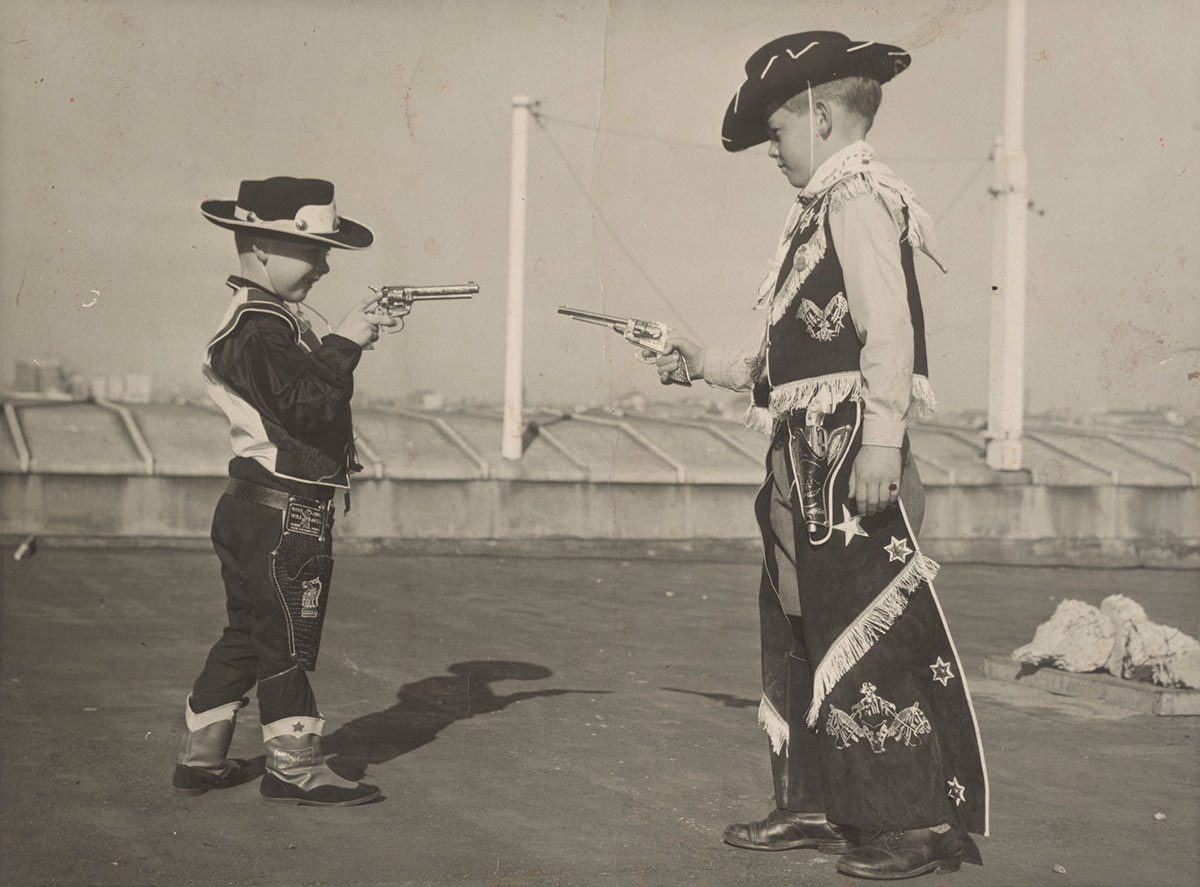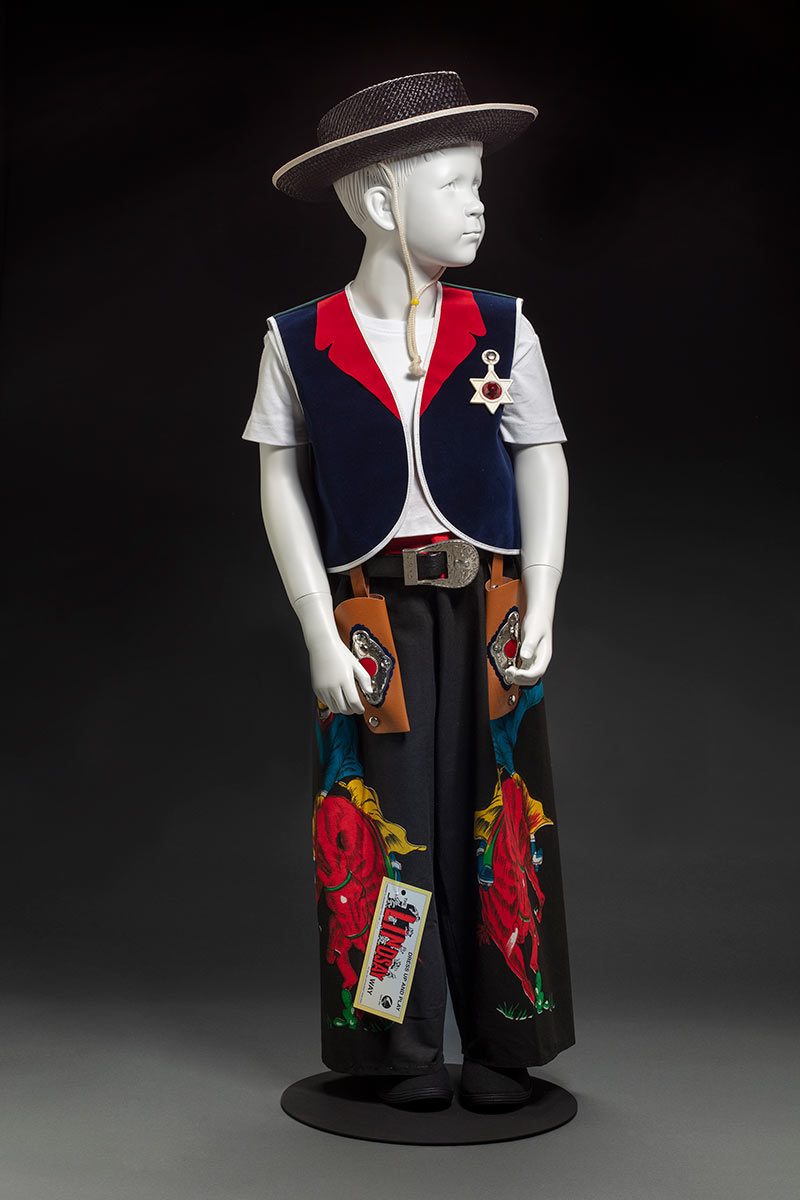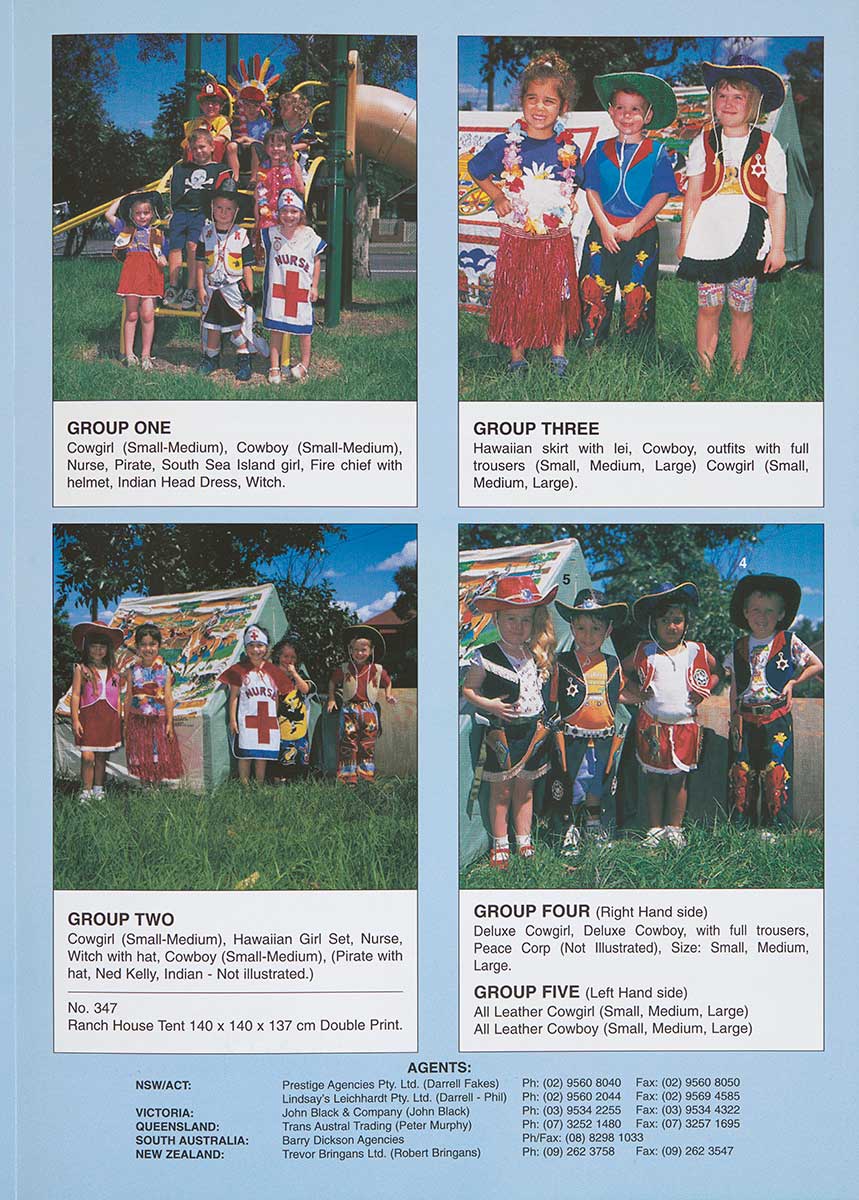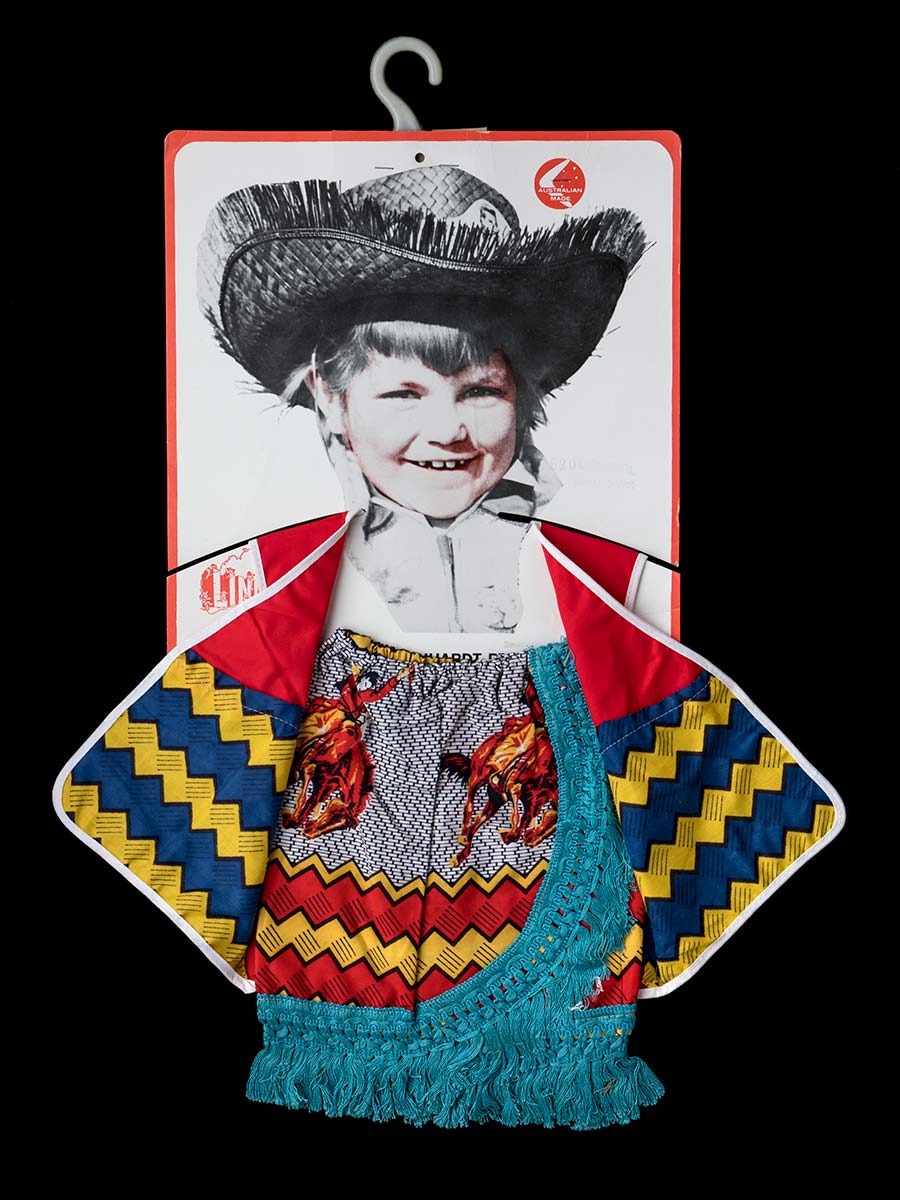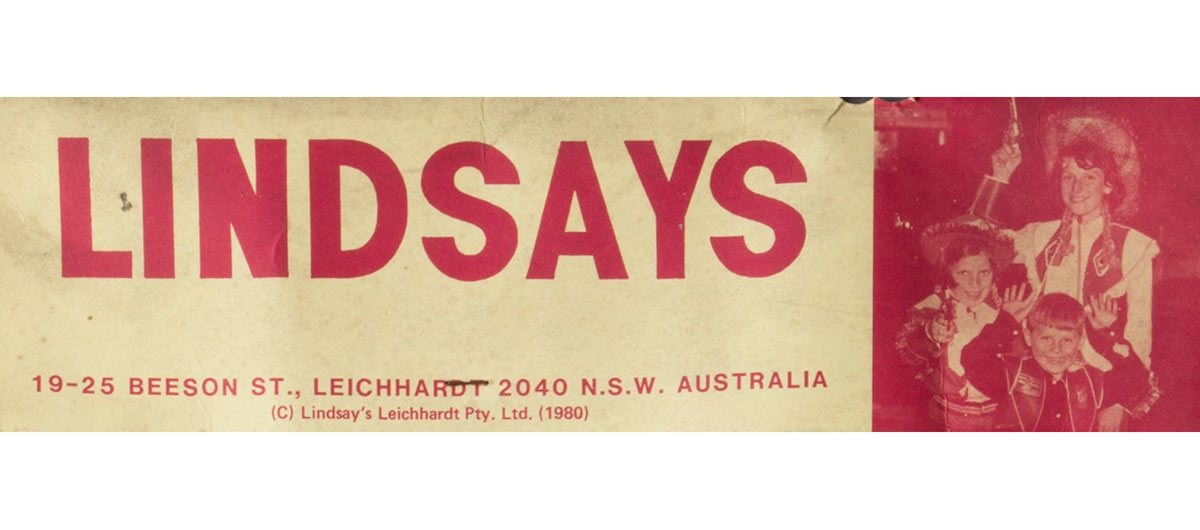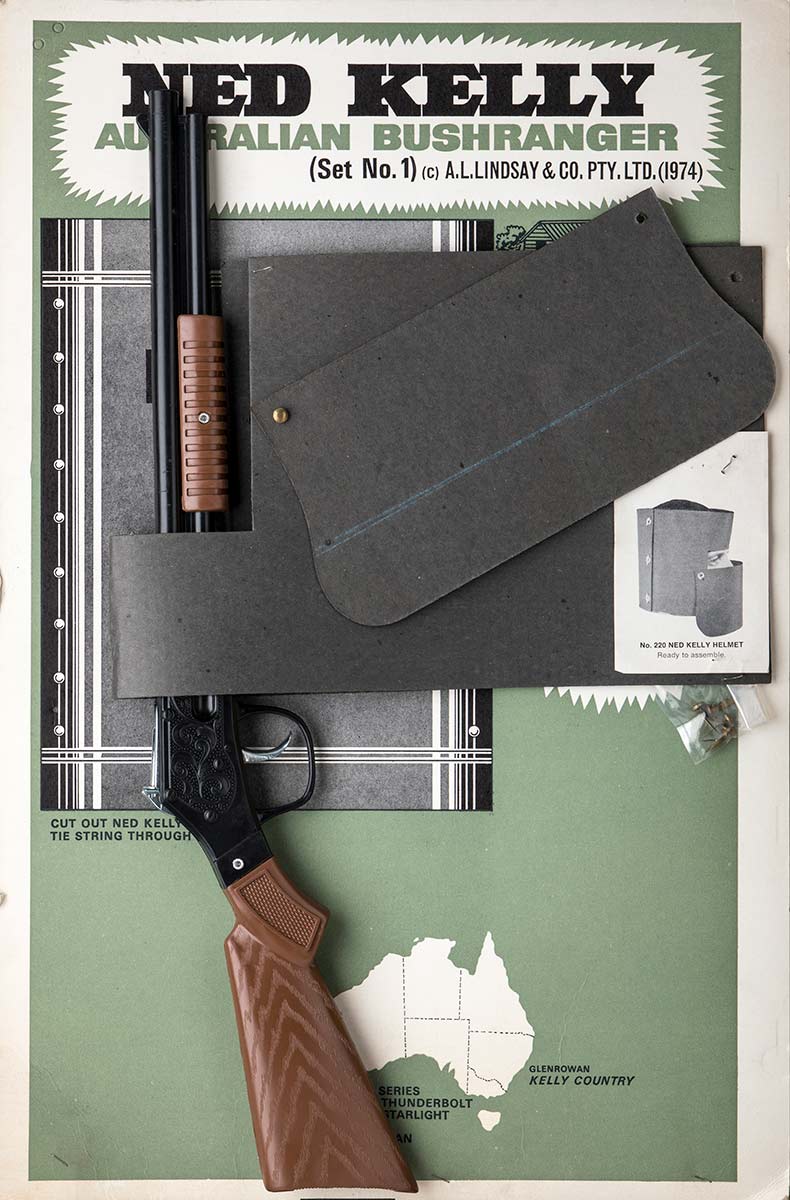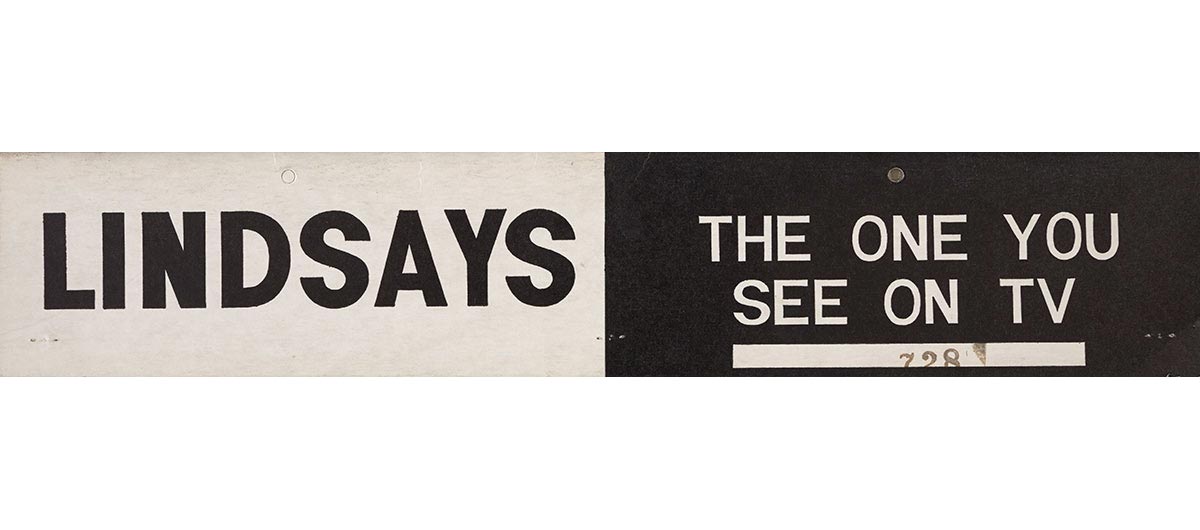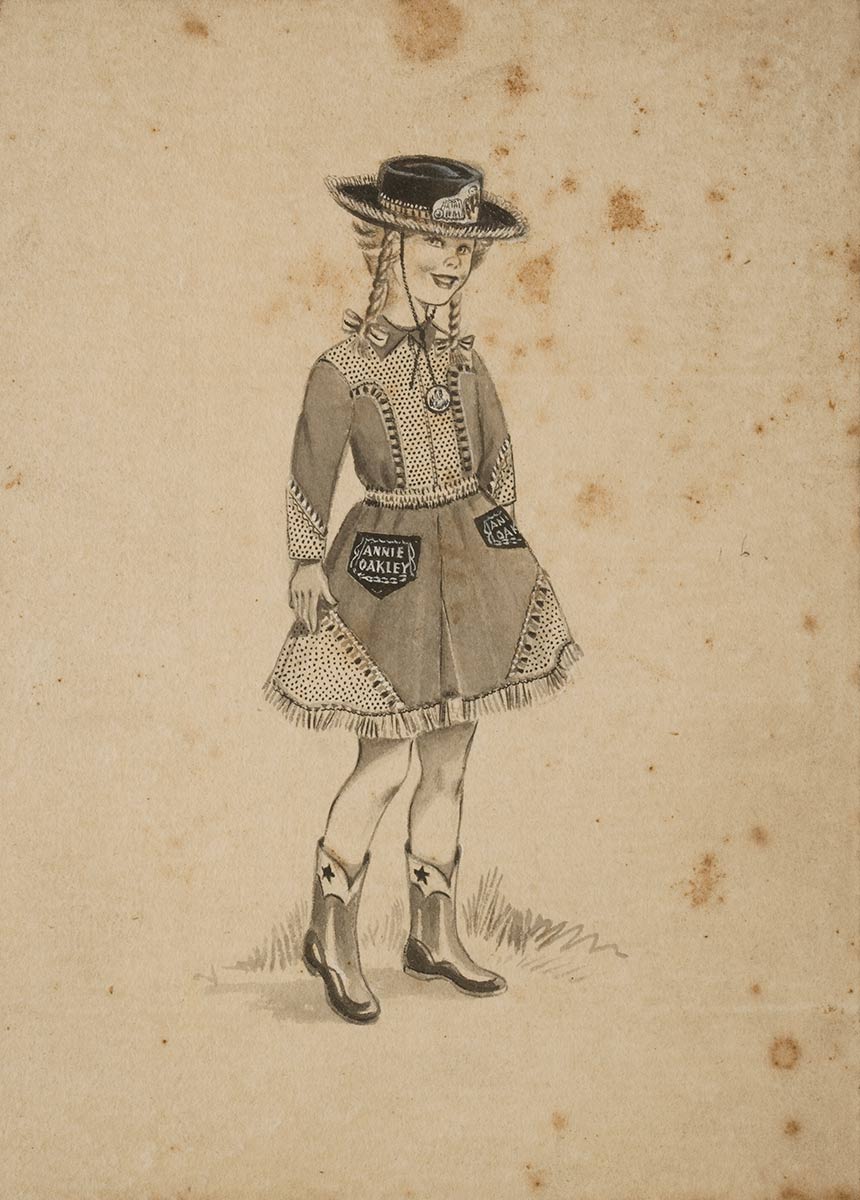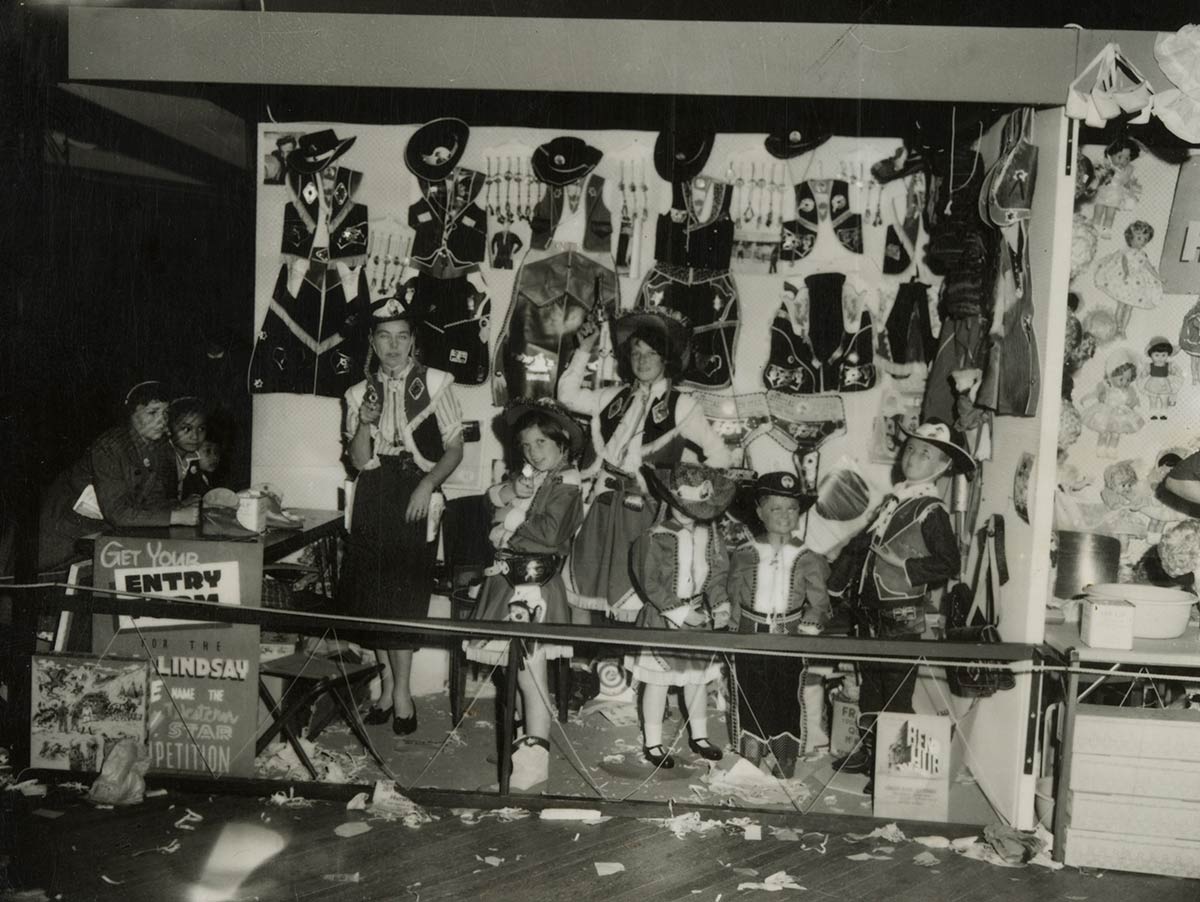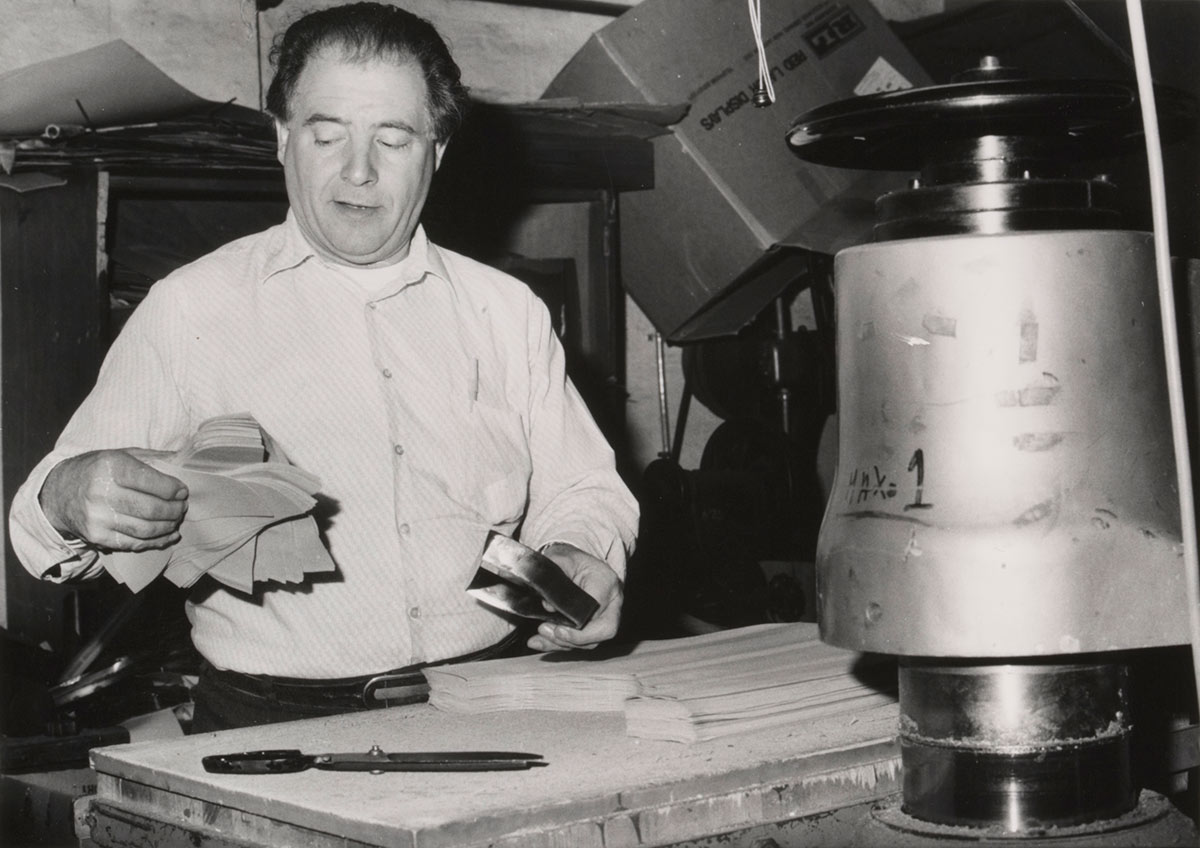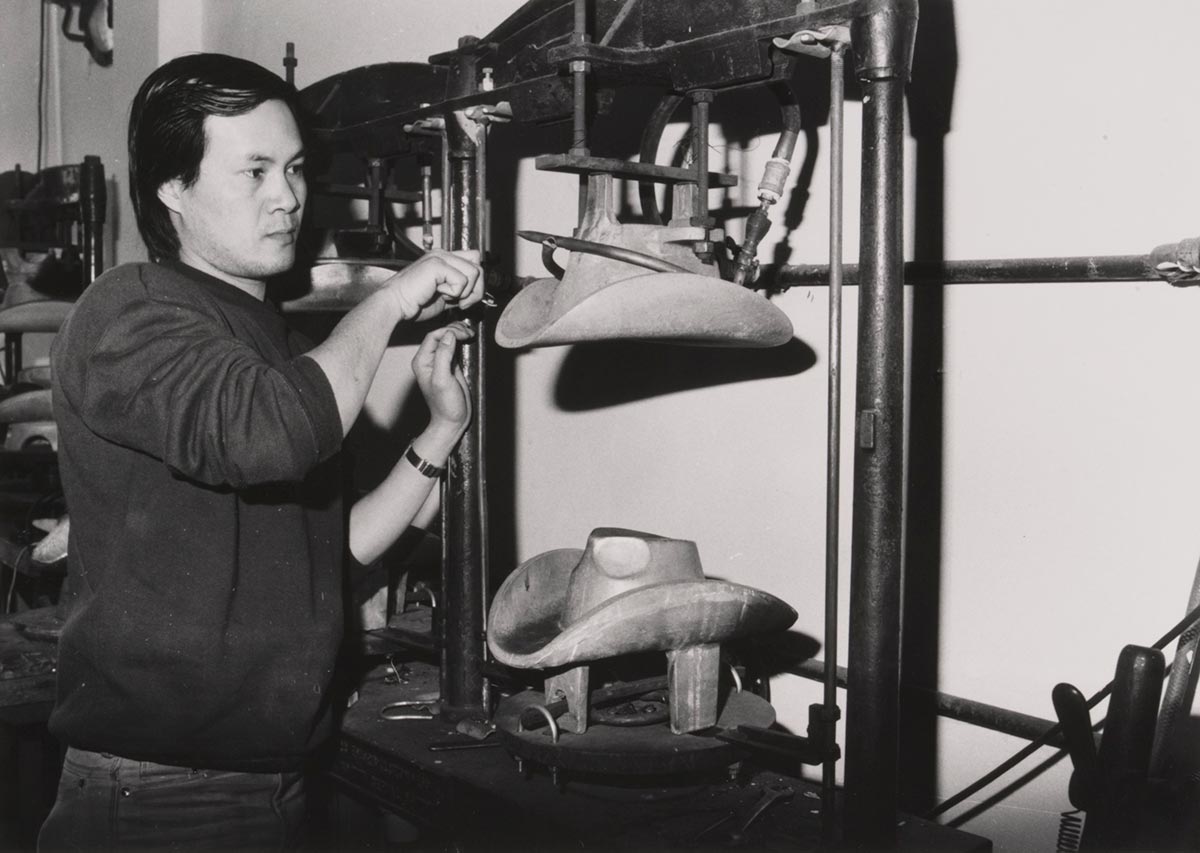Lindsay’s was a famous Sydney toy manufacturer, and many of its items feature in Toys. Inspired by the games played by his children, Albert Lindsay began making cowboy costumes in the 1930s. By the 1950s the American ‘Wild West’ dominated Australian popular culture and Lindsay’s costumes were in high demand.
Cowboy design, 1950s
Andrew Lindsay, 2021:
The humming of the sewing machines, a bank of old Singers, gave a rhythm to the place.
This bright orange cowboy and his bucking bronco was created for Lindsay’s in the 1950s by an unknown commercial artist. The design was intended to be printed on the shirt of a child’s western-style costume. A similar design appears on the flippy skirt of the cowgirl costume you can see here.
Lindsay’s designed and manufactured toys and costumes in its factories in Sydney. They were then snapped up by department stores and toy shops across the country.
Frontier landscape, 1950s
Andrew Lindsay, 2021:
My friends and I would raid the [toy] box, kit ourselves out in whatever we could grab and then tear into the bush for a mock battle.
This dramatic landscape was created for Lindsay’s in the 1950s by an unknown commercial artist.
Playing cowboys, cowgirls and ‘Indians’ (Native Americans) – located in a Hollywood-inspired frontier landscape – was a common pastime from the 1920s to the 1980s. Artistic impressions like this landscape offered children inspiration for the imaginary world that underpinned their games.
The magic of dressing up lies in the way characters can be conjured from the imagination with simple accessories or top-to-toe outfits. With the help of bits and pieces of various costumes discarded from the factory, the Lindsay children made their own fun, roaming between the bush and the backyard of their home in Terrey Hills, northern Sydney.
Cowboy costume, 1980s
Andrew Lindsay, 2021:
The family was still making cowboy and Indian and cowgirl outfits, and to their astonishment they were sitting in the box seat. Business went through the roof.
The ‘Wild West’, as portrayed in early-20th-century comic books and movies, was already familiar to Australian children of the 1950s. The arrival of television in 1956 introduced new heroes and put Lindsay’s in exactly the right place at the right time.
Inspired by a vast array of hard-bitten characters, Lindsay’s designed a range of sturdy costumes that remained popular well into the 1980s. Their costumes were generously cut to fit over everyday clothing and free from fiddly zips and buttons. Elastic waistbands allowed freedom of movement for superior stealth, brawling and ambushing. Costumes could be easily slipped off and swapped as players’ allegiances shifted.
Cowgirl costume, 1970s
Andrew Lindsay, 2021:
We dealt in fantasy, but from an early age I became aware of the realities of factory life.
Lindsay’s toy factory was a family affair that spanned 3 generations. Albert’s grandson Andrew Lindsay was born into this celebrated manufacturing dynasty. His parents and uncles, his 2 sisters and a smattering of cousins were all involved.
Although the children enjoyed lots of imaginative fun, hard work was never far away. The young Lindsays worked in the office or the cutting room during their holidays. They dressed up to promote the company at toy fairs held across the eastern states, participated in showground parades and made television appearances. Andrew and his sisters Christine and Philippa were, for many years, pictured on company stationery and costume packaging.
Ned Kelly accessories set, 1980s
Philip Lindsay, 1980s:
It was like having a million dollars’ worth of free advertising!
With the arrival of television in 1956, the Lindsay’s range expanded to include droves of dazzling western characters and new superheroes. Albert’s son Philip and his wife, Hilarie, swiftly acquired licences from major American production companies such as Disney and Warner Bros and created a range of products based on popular television programs.
Lindsay’s also created costumes with an Australian flavour, like this set inspired by bushranger Ned Kelly’s last stand at Glenrowan. Kelly and his gang never faded from the popular imagination, but their costumes were tricky to promote without a related children’s television show. Sales of this set were modest in comparison with costumes based on popular shows like Skippy the Bush Kangaroo.
Annie Oakley, 1960s
Andrew Lindsay, 2021:
Many of those girls who strutted and pounded as cowgirls grew up and embraced feminism.
Andrew’s mother, Hilarie, was dedicated to ensuring that Lindsay’s catered for girls as well as boys. She was responsible for the introduction of Annie Oakley, the tough American sharpshooter, to the costume range.
Actor Gail Davis, star of the 1950s Annie Oakley television series, proved that cowgirls were more ferocious and handier with a pistol than any cowboy. Lindsay’s offered a ready-to-wear identity for modern cowgirls who were more than a match for their cowboy brothers.
Clicking press knives, 1950s
Andrew Lindsay, 2021:
When I was old enough, my holiday job was working on the factory floor.
These fierce-looking knives were used to create hundreds of waistcoats at Lindsay’s toy factory between the 1950s and the 1980s. Lindsay’s earliest costumes were made by hand from suede and leather, before the company shifted to faster processes and synthetic materials.
During his school holidays, Andrew Lindsay was tasked with cutting out vinyl costume pieces using a clicking press. The machine works like a cookie cutter, stamping out shapes using downward pressure from knives like these.
The factory floor was an exciting place, alive with the clunk of the clicking press, the whirr of sewing machines and the hiss of the hat blocking press, which was used to make western-style headwear.
Explore more Play
You may also like
